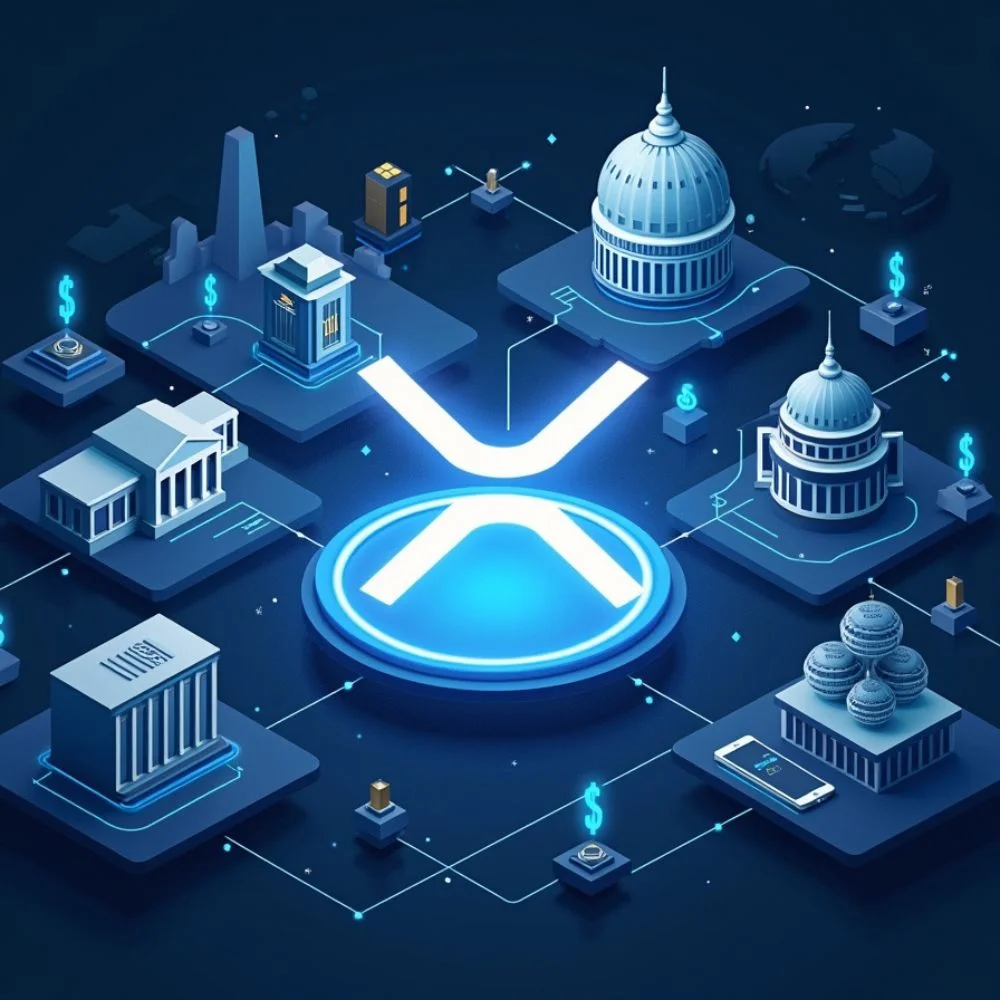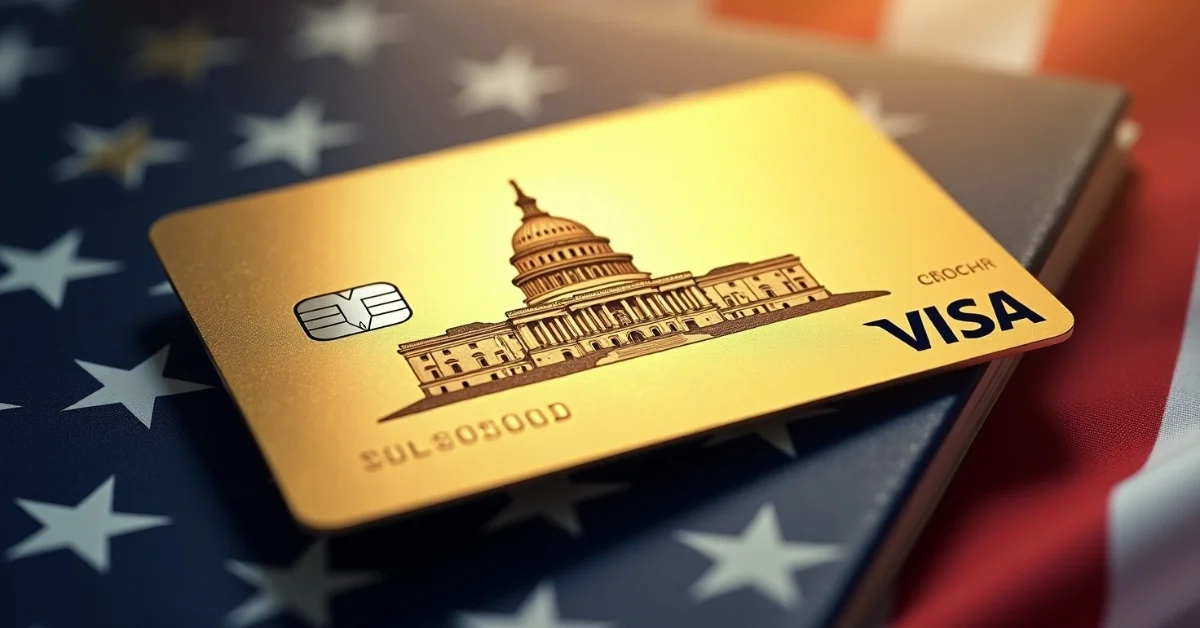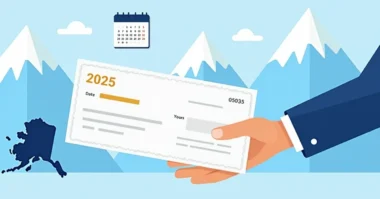Table of Contents
- Introduction
- What is XRP?
- How XRP Differs from Bitcoin and Ethereum?
- Why XRP Matters in the U.S. Strategy?
- Government and Legal Issues
- How Ripple Labs Works with the U.S. Government?
- XRP and the U.S. Dollar
- Future Plans for Digital Assets in the U.S
- How You Can Use XRP?
- Challenges and Considerations
- What the Future Holds?
- Conclusion
Introduction
In recent years, the U.S. government has taken significant steps to integrate digital assets into its financial infrastructure. Among these assets, XRP, developed by Ripple Labs, has emerged as a key player. This piece examines XRP’s role in the U.S. digital asset strategy, examining its utility, regulatory developments, and potential future impact.
What is XRP?
XRP, a digital currency introduced by Ripple Labs in 2012, was designed to streamline cross-border transactions by making them quicker and more cost-effective. Unlike Bitcoin, which is mined, XRP tokens were all created at once. Ripple Labs holds a large share of these tokens, which they release slowly into the market.
XRP is engineered to facilitate fast and efficient money transfers worldwide. A transaction with XRP takes just a few seconds, and the cost is much lower than traditional banking or even other cryptocurrencies. This makes XRP useful for banks and financial companies that need to send large amounts of money internationally.
XRP’s Inclusion in the U.S. Digital Asset Strategy
In March 2025, the U.S. government announced the creation of a Strategic Crypto Reserve, incorporating various digital assets, including XRP. This move signifies a recognition of XRP’s potential in enhancing the efficiency of financial transactions and reducing reliance on traditional banking systems.
How XRP Differs from Bitcoin and Ethereum?
While all three Bitcoin, Ethereum, and XRP are cryptocurrencies, they have different purposes.
- Bitcoin is like digital gold. It was built to be a store of value and is mostly used as an investment.
- Ethereum is like a digital computer. It allows people to create apps and contracts on a decentralized network.
- XRP is a digital currency mainly built for transferring money fast and cheap, especially between countries.
Rather than relying on traditional methods, XRP operates using a consensus protocol, which is faster and consumes significantly less energy, making it both more efficient and environmentally friendly.
Why XRP Matters in the U.S. Strategy?
In recent years, the United States has been working on a national plan for digital assets. The goal is to understand, manage, and benefit from the changes brought by cryptocurrencies and blockchain technology. XRP plays an important role in this plan for several reasons.

1. Fast and Cheap Cross-Border Payments
One of the biggest problems in global finance is sending money between countries. It often takes days and can be expensive due to bank fees and exchange rates. XRP solves this problem by allowing near-instant money transfers at a very low cost.
Banks and financial services can benefit greatly from this. If the U.S. wants to stay competitive in global finance, using technology like XRP makes sense. The government knows this and is watching XRP closely.
2. A Potential Bridge Currency
The U.S. dollar is still the world’s main currency, but digital currencies are slowly changing that. Some experts say that XRP could become a bridge currency, which helps convert one currency into another quickly and smoothly. This could reduce reliance on the U.S. dollar for every transaction and make global trading more balanced.
3. Support for Blockchain Development
XRP’s underlying system, called the XRP Ledger, is open-source and highly secure. Developers can use it to build new financial tools, apps, and systems. This kind of innovation helps the U.S. stay at the front of financial technology.
By supporting XRP and its technology, the U.S. can promote new businesses and create jobs in this space.
4. Potential Benefits for the U.S. Economy
- Efficiency: By leveraging XRP for government transactions, the U.S. can achieve faster and more efficient payment processing.
- Cost Savings: Reducing intermediaries in transactions can lead to significant cost savings for both the government and businesses.
- Financial Inclusion: XRP’s low transaction fees make it accessible, potentially aiding in financial inclusion efforts.
Government and Legal Issues
The journey for XRP hasn’t been smooth. In 2020, the U.S. Securities and Exchange Commission (SEC) filed a lawsuit against Ripple Labs. The SEC claimed that XRP was sold as an unregistered security, which means Ripple broke the law by selling it like a stock without proper approval.
This lawsuit caused XRP’s price to drop and created a lot of fear in the market. Many exchanges stopped offering XRP to customers in the U.S. until the case was cleared up.
The Legal Outcome
In 2023, a court decision determined that XRP is not considered a security when sold to the general public, but it is classified as a security when offered to institutions for fundraising activities. This was a partial win for Ripple and gave some clarity to the market. This ruling showed the need for better laws around digital assets. The U.S. is now working on creating clear rules for cryptocurrencies, and XRP’s case is helping shape those laws.
How Ripple Labs Works with the U.S. Government?
Ripple Labs has always tried to work closely with regulators and lawmakers. They believe that working within the rules is better than fighting them. Ripple has attended many government hearings, submitted reports, and even suggested rules to help manage the digital asset world better.
This attitude helps Ripple stand out. While some crypto companies ignore the rules, Ripple is building partnerships. This makes it easier for XRP to become a trusted part of the U.S. financial system.
XRP and the U.S. Dollar
Some people worry that digital assets like XRP could replace the U.S. dollar. But it’s more likely that XRP and the dollar will work together. XRP can help move dollars faster and more cheaply, especially across borders.
For example, someone in the U.S. could send dollars, have them converted into XRP, and the receiver in another country could get their local money in seconds. This type of system still supports the dollar, but uses XRP to make things faster and smoother.
Future Plans for Digital Assets in the U.S
In 2022, the U.S. government released a paper called the “Digital Asset Framework.” It talks about how the U.S. should handle cryptocurrencies. Some of the goals are:
- Protect consumers
- Prevent financial crimes
- Support innovation
- Strengthen global leadership
XRP fits into this plan because it is already used in real-world systems, has support from many institutions, and Ripple is open to regulation.
How You Can Use XRP?
If you’re new to crypto, using XRP is simple.
- Buy XRP on a trusted exchange (like Coinbase or Kraken, if available in your country).
- Store XRP in a wallet app or hardware wallet.
- Use XRP to send money, pay for services, or hold as an investment.
Always be careful. Cryptocurrency prices can go up or down quickly, and you should never invest more than you can afford to lose.
Challenges and Considerations
While XRP offers numerous advantages, challenges remain:
- Volatility: Like many cryptocurrencies, XRP’s value can fluctuate, posing risks for large-scale adoption.
- Regulatory Uncertainty: Despite recent legal victories, ongoing regulatory scrutiny could impact XRP’s future.
- Technological Integration: Integrating XRP into existing financial systems requires significant technological adjustments.
What the Future Holds?
XRP is already playing a key part in the world of digital money. As the U.S. builds its digital asset strategy, XRP could help shape how money moves, how businesses grow, and how people connect financially.
The future may include:
- More XRP adoption by banks
- XRP use in U.S. government projects
- New apps built on the XRP Ledger
Clear laws that support XRP’s growth
Conclusion
XRP is not just another digital coin. It is a powerful tool that fits naturally into the U.S. plan for modern finance. From fast cross-border payments to strong partnerships and regulatory progress, XRP has shown it has staying power. As the U.S. continues to build its digital asset strategy, XRP will likely remain one of the key players. By focusing on innovation, speed, and regulation, XRP helps the U.S. economy become stronger, smarter, and more connected to the world.







